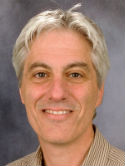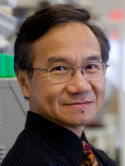Granulocyte-colony stimulating factor and multiple cycles of strongly myelosuppressive alkylator-based combination chemotherapy in children with neuroblastoma Journal Article
| Authors: | Kushner, B. H.; Heller, G.; Kramer, K.; Cheung, N. K. V. |
| Article Title: | Granulocyte-colony stimulating factor and multiple cycles of strongly myelosuppressive alkylator-based combination chemotherapy in children with neuroblastoma |
| Abstract: | BACKGROUND. The authors assessed key effects of granulocyte-colony stimulating factor (G-CSF) used prophylactically with multiple cycles of strongly myelosuppressive alkylator-based combination chemotherapy. To the authors' knowledge, no large study has focused on G-CSF in this setting, yet this kind of treatment has recently become standard for poor risk pediatric solid tumors such as neuroblastoma. PATIENTS AND METHODS. Children with neuroblastoma received cyclophosphamide 140 mg/kg (i.e., 4200 mg/m2), doxorubicin 75 mg/m2, and vincristine (CAV) in cycles 1, 2, 4, and 6 and cisplatin 200 mg/m2 and etoposide 600 mg/m2 (P/VP) in cycles 3, 5, and 7. To maximize dose intensity, chemotherapy was begun as soon as the absolute neutrophil count (ANC) was ≥ 500/μL and platelet count was ≥ 100,000/μL. No cytokines were used during 1990-1994 (control group; n = 28), but G-CSF was used from 1995 to 1998 (G-CSF group; n = 30) at 5 μg/kg/day subcutaneously from 1 day after chemotherapy until the ANC was ≥ 500/μL on 2 successive days or was ≥ 1000/μL. RESULTS. Each cycle of CAV decreased ANCs to < 200/μL in all 58 patients; recovery to 200/μL and to 500/μL was significantly sooner with G-CSF. In contrast, P/VP did not invariably cause severe neutropenia: similar numbers of patients in each group maintained ANCs ≥ 200/μL and ≥ 500/μL; recovery to 500/μL (but not to 200/μL) was significantly faster in the G-CSF group. G-CSF had no impact on rates of febrile episodes. Bacterial/fungal infections were slightly less frequent in the G-CSF group with CAV (P = 0.11) but not with P/VP. Dose intensity through cycle 4 was the same in both groups. Beginning with cycle 3, G-CSF patients had slower recovery to platelet counts ≥ 100,000/μL. Response rates were similar in the two groups. CONCLUSIONS. With multiple cycles of strongly myelosuppressive alkylator-based combination chemotherapy, prophylactic use of G-CSF hastened ANC recovery but did not reduce the incidence of febrile episodes, had little impact on infection rates, did not yield augmented dose intensity, was associated with prolonged thrombocytopenia, and had no effect on response rates of neuroblastoma. The data support more limited use of G-CSF. (C) 2000 American Cancer Society. |
| Keywords: | child; controlled study; treatment outcome; child, preschool; major clinical study; clinical trial; neutropenia; cisplatin; doxorubicin; cancer combination chemotherapy; chemoprophylaxis; controlled clinical trial; infection; bone marrow suppression; etoposide; thrombocytopenia; antineoplastic combined chemotherapy protocols; drug administration schedule; alkylating agent; cyclophosphamide; vincristine; fever; infant; neuroblastoma; antineoplastic agents, alkylating; thrombocyte count; remission induction; recombinant granulocyte colony stimulating factor; granulocyte colony-stimulating factor; bone marrow neoplasms; dose-intensive chemotherapy; humans; human; priority journal; article; granulocyte-colony stimulating factor (g-csf) |
| Journal Title: | Cancer |
| Volume: | 89 |
| Issue: | 10 |
| ISSN: | 0008-543X |
| Publisher: | Wiley Blackwell |
| Date Published: | 2000-11-15 |
| Start Page: | 2122 |
| End Page: | 2130 |
| Language: | English |
| DOI: | 10.1002/1097-0142(20001115)89:10<2122::aid-cncr13>3.0.co;2-k |
| PUBMED: | 11066054 |
| PROVIDER: | scopus |
| DOI/URL: | |
| Notes: | Export Date: 18 November 2015 -- Source: Scopus |
Altmetric
Citation Impact
BMJ Impact Analytics
Related MSK Work






